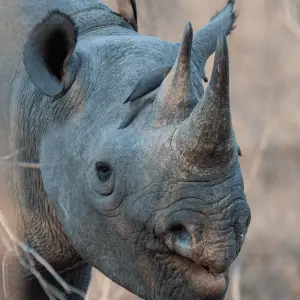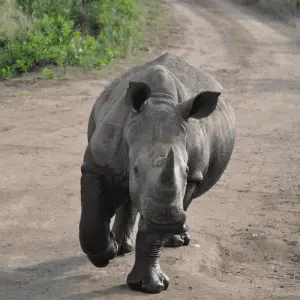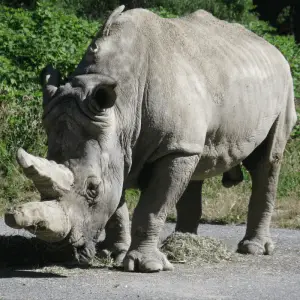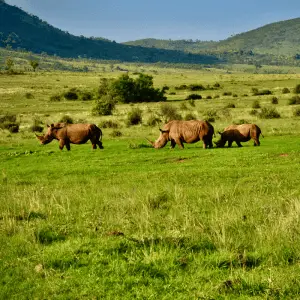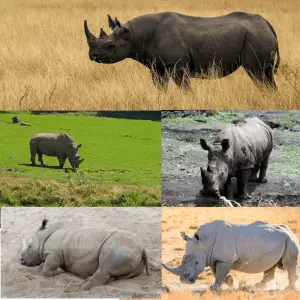So, what do rhinos eat? As the second-largest mammal on Earth, rhinos consume significant food to stay alive daily. But before knowing their eating habit, you must understand that all five species of rhinos are herbivores. To learn more about their eating habit, just read on.
Eating Habits
The five rhinoceros species, Javan, Sumatran, Indian, White & Black Rhino, eat only plants and other kinds of vegetation. It must be kept in mind that depending on the habitat of the rhino species, the grasses and leaves may vary.
Diversity is crucial for the diet of a rhino. So, a rhinoceros living in the Savanna will eat different vegetation from a rhinoceros living in the jungle. At the same time, the amount of food a rhino devours depends on the season. For instance, when greenery is in abundance during the rainy season. The Black rhinos will eat something different when it is dry.
Now let’s focus on the eating habit of each rhinoceros species.
White Rhino
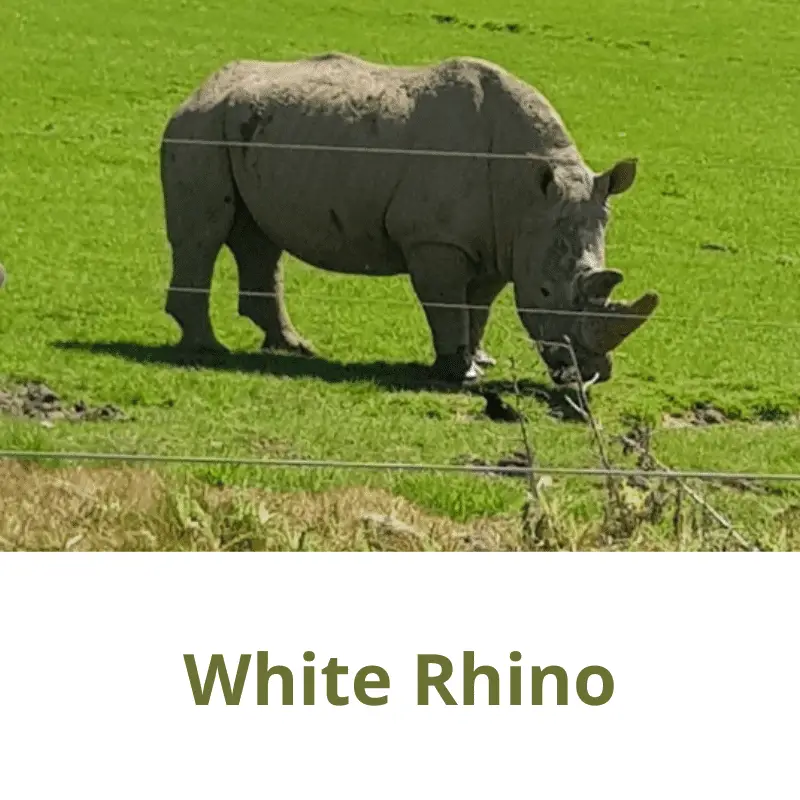
Habitat: Grassland and Savanna
The white rhino is a grazer, also known as a square-lipped rhino. A white rhino’s flat wide upper lip is suitable for grazing. The lip structure helps a rhino to be able to nibble on the shortest of grasses.
Black Rhino
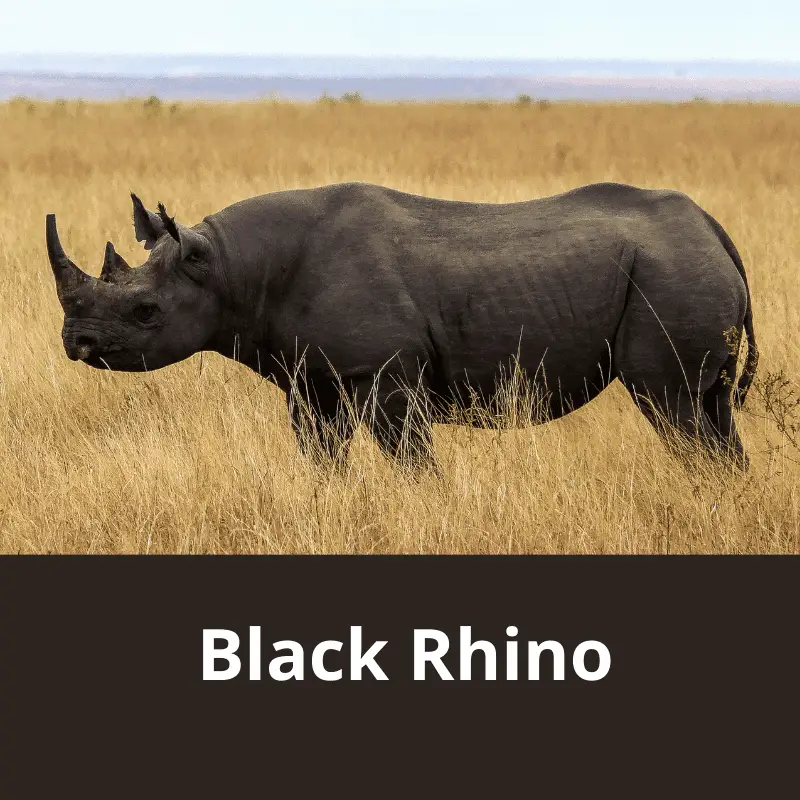
Habitat: Desert, Tropical Grassland, and Shrubland
The Black rhino is also known as a hook-lipped rhino. Based on their diet, their lip is related. Black rhinos are browsers, and with their hook-like lips, they can easily feed on the fruits and leaves on the trees. Apart from the leaves and fruits, Black Rhinos also tend to eat herbs and various edible plant species present in the environment. However, they are very selective about the plants they feed on and usually stay away from grasses. The Black rhino tends to feed on readily available plants. Hence, it won’t be wrong to call them picky eaters.
The Javan Rhino
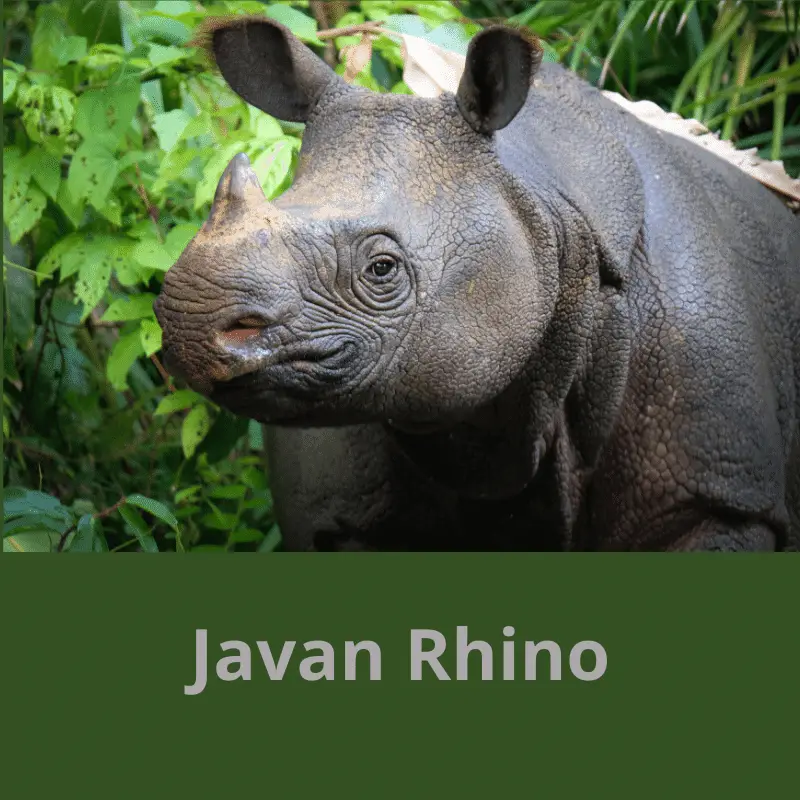
Habitat: Tropical & Subtropical Forests
The diet of Javan rhinos is very diverse. They are both browsers and grazers. They graze on grass and browse on twigs, leaves, small plant shoots, and fruit falling from the tree.
The Indian Rhino
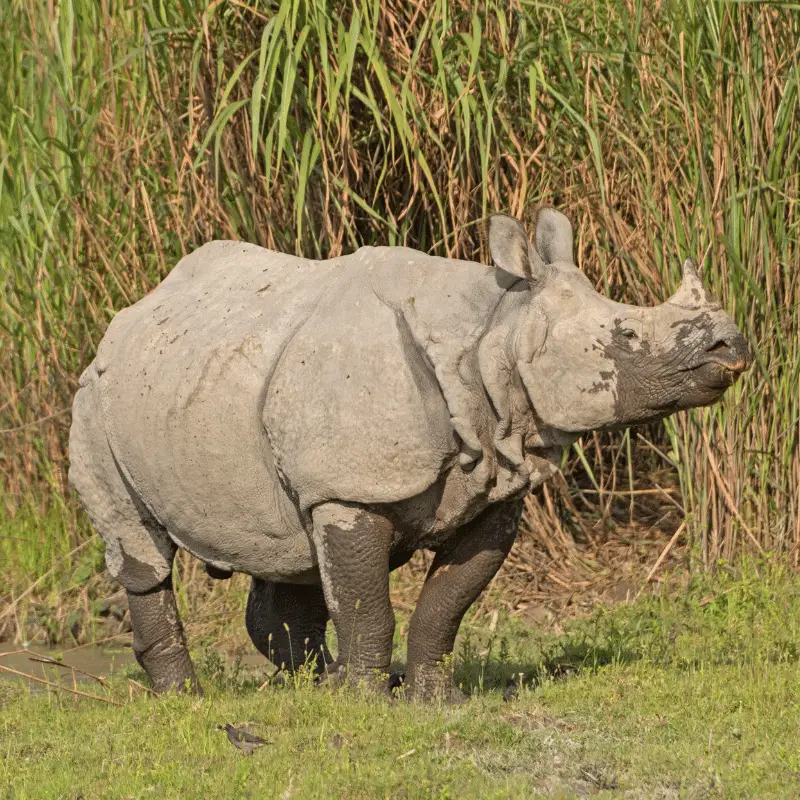
Habitat: Tropical Grassland, Wetlands, Shrubland, and Savanna
The Indian rhino is a grazer, just like the white rhino. However, the Indian Rhino loves to stay in the water. Hence, they feed on a wide range of aquatic plants.
The Sumatran Rhino
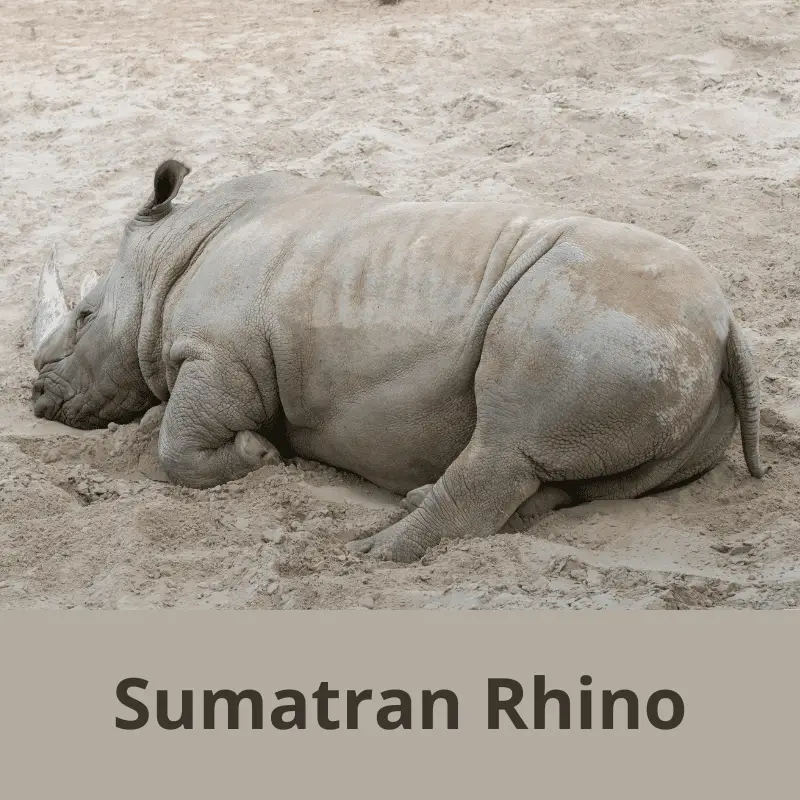
Habitat: Subtropical and Tropical Forests
Unlike the other species of rhinos, the Sumatran Rhino is the smallest and the hairiest. They feed on leaves, fruit, twigs, and even plant tips.
The actual intake of every rhino species might vary, but some rhinoceros consume massive pounds of grass daily to maintain weight.
Recommended Read: What are the ancestors of the rhino species?
Diet Of a Captive Rhino
The diet of a captive rhino would be somewhat different from those living in the wild. The diet of rhinos living in zoos consists of alfalfa and soy.
Difference Between Browsers and Grazers
Rhinos are grazers and browsers. Browsers love to eat leaves and fruits from shrubs and bushes, whereas grazers tend to eat vegetation like grass, especially the smaller grasses.
The rhinoceros are browsers and grazers, so they eat different vegetation types. For example, Black rhinos are browsers and tend to live by eating trees and bushes. On the other hand, White rhinos are grazers. They tend to feed on grasses while walking into the wild with their enormous heads and square-shaped lips facing the ground. Rhinos that fall into the category of browsers won’t even feed on any grasses; instead, they tend to provide on those items that are above their eye level. When food is scarce, they tend to eat the roots and bark of trees.
Rhino’s body Shape Depends on the Food They Eat and How
Depending on the food availability, rhinos are categorised as grazers and browsers. However, the various rhino species have evolved their mouths in a way that helps them to forage for food. For instance, browser rhinos come with a pointed upper lip to grasp food. On the other hand, grazer rhinos come with a square-shaped lip that permits them to consume a large amount of grass quickly.
Recommended Read: Learn how the horns can also help the rhinos eat
Food Amount
You must remember that all rhino species are not the same size. The Indian rhino and the White rhino are the most prominent five species. They weigh around 2,700 kilograms (5952.5 pounds).
Since rhinos are the largest grazing species on Earth, the African White rhino consumes more than 100 pounds of food daily. They can quickly eat around 120 pounds (54 kilograms) daily.
How much time does a rhino spend eating?
Humans eat three times a day, but a rhino eats whenever they feel like eating or whenever they get the opportunity. Around one-third of the day goes to consuming foods. So instead of having set meals, the rhinos, especially the White rhinos, would eat throughout the day.
Do rhinos eat meat?
Rhinos are herbivores. Hence, they won’t feed on meat from an animal or humans.
Do rhinos eat poop?
Adult rhinos don’t eat poop. However, rhino calves eat their mother’s droppings to mature their digestive system.
Conflict Between Humans and Rhinos
We all know that rhinos have high nutritional demands. To meet these increased demands of nutrition, large land areas for browsing and grazing are needed. However, humans are slowly encroaching on these lands for agricultural purposes. As a result, a conflict between the human communities and rhinos occurs.
Recommended Read: Lifespan of the rhino and the effects of poaching
The White and Black Rhinos resort to nighttime feeding due to human activity in dangerous habitats. This short nighttime feeding affects the nutrition of a rhino.
Source:
https://www.nationalgeographic.com/animals/mammals/facts/black-rhinoceros


